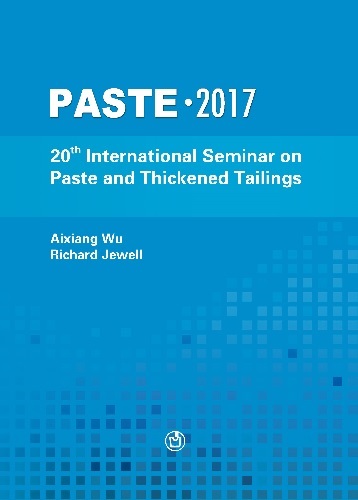Challenges associated with the design of a dewatering plant that will undergo a large increase in tailings throughput during the initial years of the project

|
Authors: Gu, F; Bradley, R |
DOI https://doi.org/10.36487/ACG_rep/1752_05_Gu
Cite As:
Gu, F & Bradley, R 2017, 'Challenges associated with the design of a dewatering plant that will undergo a large increase in tailings throughput during the initial years of the project', in A Wu & R Jewell (eds), Paste 2017: Proceedings of the 20th International Seminar on Paste and Thickened Tailings, University of Science and Technology Beijing, Beijing, pp. 41-48, https://doi.org/10.36487/ACG_rep/1752_05_Gu
Abstract:
This paper presents a case study for the feasibility design of a dewatering plant to produce filter cake for stacked tailings storage facility. The project will be developed in phases. For the first two years of operation, the dewatering plant needs to handle 2 Million Tons Per Annum (MTPA) of tailings. After this initial period and for the following 30 years the dewatering plant must be able to handle a tailings production rate of 4 MTPA. The simple way to handle this doubling of the tailings production rate would have been to design a plant capable of handling 2 MTPA and to build a second module to bring the overall plant throughput to 4 MTPA. Unfortunately, the need to operate at half the final design throughput is for a relatively short period of time compared to the overall life of the project. Therefore rather than simply designing and building two duplicate plants, each of them able to handle half of the tailings stream, the plant was designed from the onset to handle the 4 MTPA. The challenge became one of properly sizing and selecting the main pieces of equipment such as the thickener and the pumps to operate at the lower tonnages during the initial years of operation without the need for their replacement or major plant retrofits two years into the project. The objective was to look for opportunities that would allow a doubling of the plant capacity without a doubling of the capital and operation costs, had the decision been made to proceed with two modules. The paper also presents some of the design considerations that were included to minimize clean water and power usage as well as to remove heat in the water circuit generated by the process.
© Copyright 2025, Australian Centre for Geomechanics (ACG), The University of Western Australia. All rights reserved.
View copyright/legal information
Please direct any queries or error reports to repository-acg@uwa.edu.au
View copyright/legal information
Please direct any queries or error reports to repository-acg@uwa.edu.au